 |
 |
 |
| |
The Large Gap Between Statin Eligibility and Prescription in the NA-ACCORD
|
| |
| |
Big Gap Between Statin Eligibility and Prescriptions in 15 HIV Cohorts
Conference on Retroviruses and Opportunistic Infections (CROI), February 13-16, 2017, Seattle
from Jules: IDUs were also less likely to receive a statin & more likely to fall in the "statin treatment gap" meaning a patients falls within the ATPIII Guidelines to be prescribed a statin [wide 95% CI]
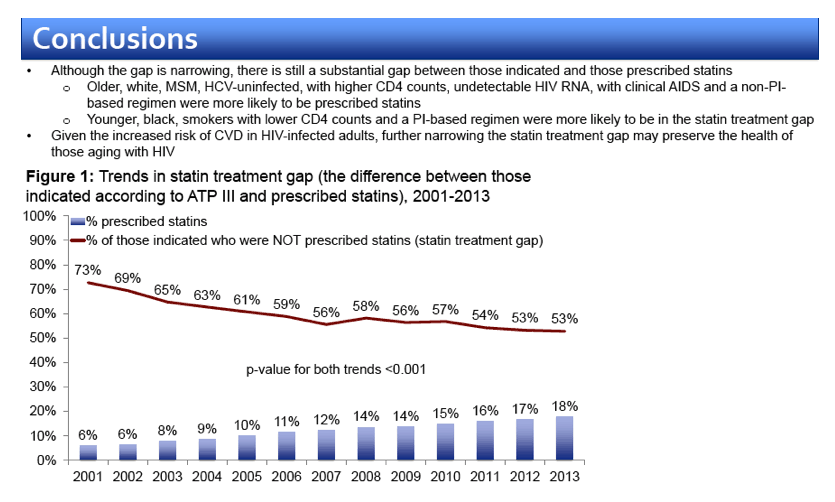
-------------
Big Gap Between Statin Eligibility and Prescriptions in 15 HIV Cohorts
Conference on Retroviruses and Opportunistic Infections (CROI), February 13-16, 2017, Seattle
Mark Mascolini
More than half of HIV-positive people in a large North American cohort eligible for statins by current guidelines did not have a statin prescription in 2013, according to results of an 86,000-person analysis [1]. Younger people, blacks, and smokers were more likely to fall in the "statin treatment gap."
The higher risk of cardiovascular disease with HIV infection is well appreciated. Statins cut heart disease risk by decreasing low-density lipoprotein (LDL) cholesterol. NA-ACCORD researchers who conducted this study note that statins may also benefit people with HIV because of their impact on inflammation and immune activation. At this point, however, general-population guidelines inform statin use in people with HIV. The investigators conducted this study to estimate trends in statin prescriptions for people with HIV, the statin treatment gap, and factors associated with statin prescription or falling into the gap. Investigators defined:Statin Treatment Gap: notprescribed statins at, within 6 months after, indication according to ATP III guidelines, as is appropriate for the calendar years of the study period (N=45,513)
The analysis involved 13 US and 2 Canadian HIV cohorts in the period from January 2001 through December 2013. The researchers tabulated the number of statin prescriptions for the 86,535 people in the 15 cohorts. They calculated the number of people who fell into the statin treatment gap by determining how many people did not have a statin prescription within 6 months of a statin indication according to ATP III guidelines for the study years.
The NA-ACCORD team determined that 76,313 HIV-positive people never had a statin prescription, while 10,222 did. The never-prescribed group differed by at least 5% from the prescribed group in proportions 50 or older (18% versus 36%), whites (37% versus 47%), blacks (40% versus 32%), men who have sex with men (51% versus 57%), low high-density lipoprotein (HDL) cholesterol (21% versus 29%), high LDL cholesterol (7% versus 19%), CD4 count at or above 350 (42% versus 49%), viral load at or below 200 copies (27% versus 40%), clinical AIDS diagnosis (17% versus 22%), and protease inhibitor (PI) therapy (25% versus 38%).
The proportion of people prescribed a statin tripled from 6% in 2001 to 18% in 2013 (P < 0.001). Over that time, the statin treatment gap (the difference between those with a statin indication and those prescribed a statin) narrowed (P < 0.001) but always remained above 50%: The gap stood at 73% in 2001, 56% in 2007, and 53% in 2013.
Analyses adjusted for treated hypertension, systolic blood pressure, HDL, LDL, and total cholesterol, diabetes, and high Framingham cardiovascular risk score identified factors independently associated with (1) lower or higher chances of getting a statin prescription over the study period, and (2) lower or higher chances of falling into the statin treatment gap, at the following adjusted hazard ratios (aHR) (and 95% confidence intervals):
Lower chance of getting a statin prescription
-- Age under 40 (vs 40-49): aHR 0.36 (0.33 to 0.38)
-- Female (vs male): aHR 0.81 (0.75 to 0.88)
-- Black (vs white): aHR 0.55 (0.52 to 0.59)
-- Hispanic (vs white): aHR 0.87 (0.80 to 0.94)
-- Other race (vs white): aHR 0.78 (0.70 to 0.88)
-- Drug injector (vs MSM): aHR 0.70 (0.63 to 0.77)
-- HCV infected: aHR 0.55 (0.51 to 0.60)
-- Never smoking: aHR 0.90 (0.84 to 0.97)
-- CD4s 200-349 (vs >/=350): 0.74 (0.71 to 0.77)
-- CD4s <200 (vs >/=350): 0.53 (0.50 to 0.57)
-- Viral load >200 (vs
-- PI-based therapy: aHR 0.73 (0.70 to 0.77)
Higher chance of getting a statin prescription
-- Age 50-59 (vs 40-49): aHR 1.62 (1.54 to 1.69)
-- Age 60-69 (vs 40-49): aHR 2.31 (2.15 to 2.48)
-- History of clinical AIDS: aHR 1.15 (1.08 to 1.21)
Lower chance of falling in statin treatment gap
-- Female (vs male): aHR 0.79 (0.64 to 0.97)
-- Never smoker: aHR 0.60 (0.52 to 0.69)
Higher chance of falling in statin treatment gap
-- Age under 40 (vs 40-49): aHR 1.61 (1.38 to 1.88)
-- Black (vs white): aHR 1.22 (1.05 to 1.42)
-- CD4 <200 (vs >/=350): aHR 1.26 (1.07 to 1.49)
-- PI-based therapy: aHR 1.26 (1.10 to 1.44)
Despite the narrowing statin treatment gap, the researchers conclude that "a substantial gap" between statin indications and prescriptions remains. Because of the higher risk of cardiovascular disease in people with HIV, the NA-ACCORD investigators propose that "further narrowing the statin treatment gap may preserve the health of those aging with HIV."
Reference
1. Althoff KN, Horberg MA, Eron JJ, et al. The large gap between statin eligibility and prescription among HIV+ in North America. Conference on Retroviruses and Opportunistic Infections (CROI), February 13-16, 2017, Seattle. Abstract 619.
---------------------
The Large Gap Between Statin Eligibility and Prescription in the NA-ACCORD
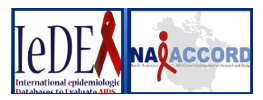
Keri N Althoff1, Michael A Horberg2, Joseph Eron3, Stephen J Gange1, Heidi Crane4, Amy Justice5, Mari M Kitahata4, Joseph Margolick1, Oghenowede Eyawo6, and Richard Moore1for the North American AIDS Cohort Collaboration on Research and Design (NA-ACCORD) of IeDEA1. Johns Hopkins University, Baltimore, MD, USA; 2. Kaiser PermanenteMid-Atlantic States, Rockville, MD, USA; 3. University of North Carolina –Chapel Hill, Chapel Hill, NC, USA; 4. University of Washington, Seattle, WA, USA; 5. Yale University and the Veterans Affairs Connecticut Healthcare System, New Haven, CT, USA; 6. BC Centre for Excellence inHIV/AIDS, Vancouver, BC, Canada
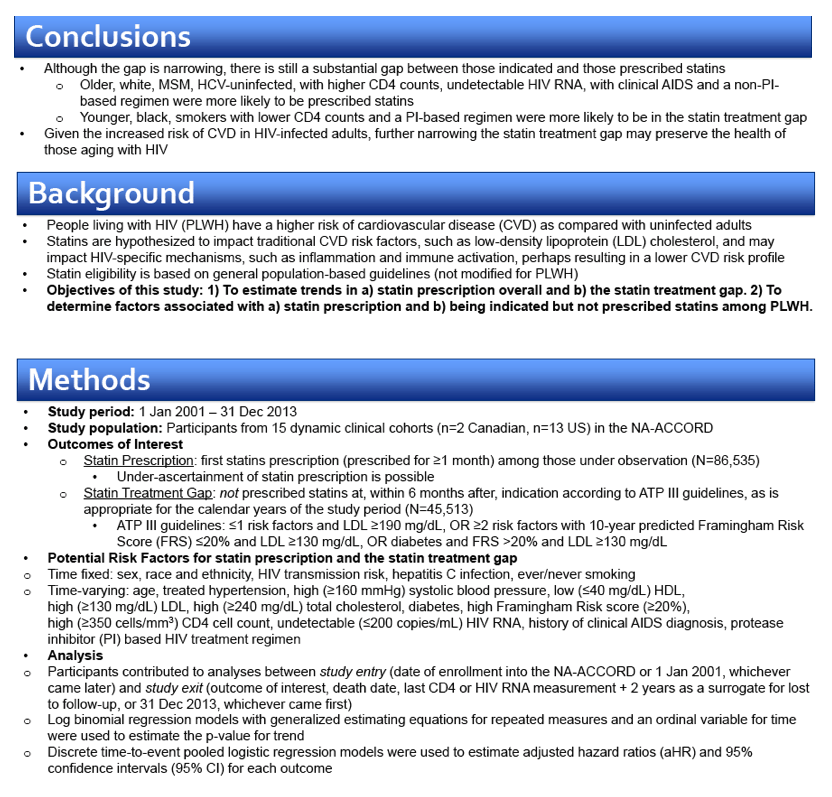
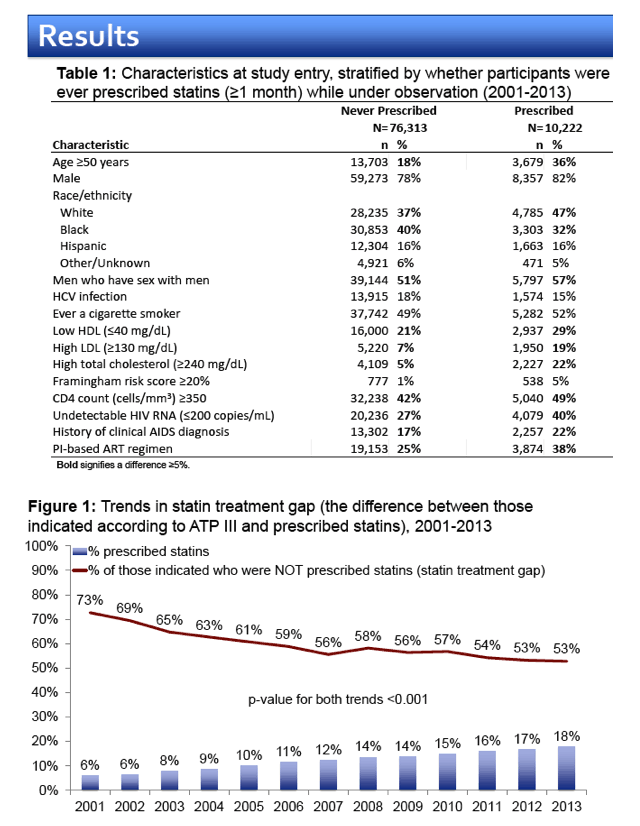
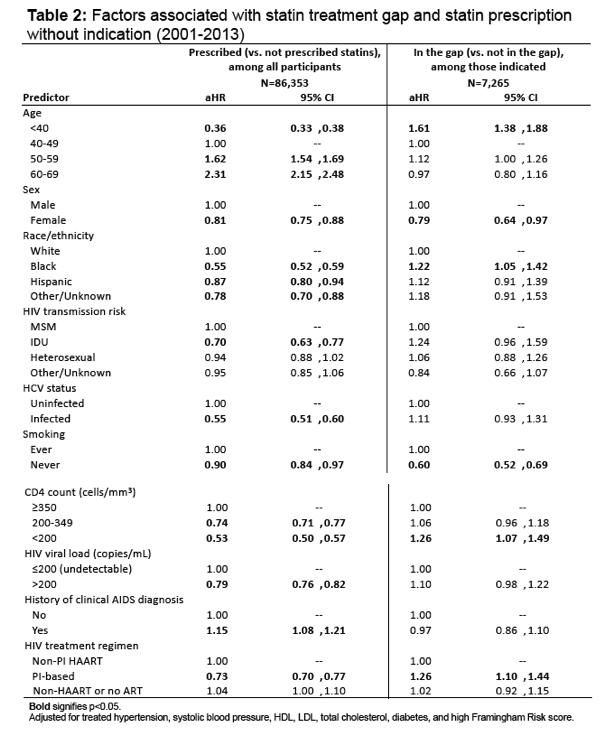
|
| |
|
 |
 |
|
|